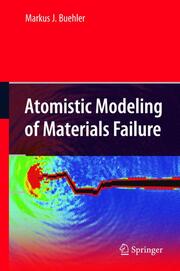Detailansicht
Atomistic Modeling of Materials Failure
ISBN/EAN: 9781441945518
Umbreit-Nr.: 1589859
Sprache:
Englisch
Umfang: lxviii, 492 S., 331 s/w Illustr., 20 s/w Tab., 492
Format in cm:
Einband:
kartoniertes Buch
Erschienen am 01.04.2010
Auflage: 1/2008
- Zusatztext
- InhaltsangabeBasics of Atomistic, Continuum and Multiscale Methods.- Basic Atomistic Modeling.- Basic Continuum Mechanics.- Atomistic Elasticity: Linking Atoms and Continuum.- Multiscale Modeling and Simulation Methods.- Material Deformation and Failure.- Deformation and Dynamical Failure of Brittle Materials.- Deformation and Fracture of Ductile Materials.- Deformation and Fracture Mechanics of Geometrically Confined Materials.
- Kurztext
- Atomistic Modeling of Materials Failure is an introduction to molecular and atomistic modeling techniques applied to solid deformation and fracture. Focusing on a variety of brittle, ductile and geometrically confined materials, this detailed overview includes computational methods at the atomic scale, and describes how these techniques can be used to model the dynamics of cracks, dislocations and other deformation mechanisms. A full description of molecular dynamics (MD) as a numerical modeling tool covers the use of classical interatomic potentials and implementation of large-scale massively parallelized computing facilities in addition to the general philosophies of model building, simulation, interpretation and analysis of results. Readers will find an analytical discussion of the numerical techniques along with a review of required mathematical and physics fundamentals. Example applications for specific materials (such as silicon, copper) are provided as case studies for each of the techniques, areas and problems discussed. Providing an extensive review of multi-scale modeling techniques that successfully link atomistic and continuum mechanical methods, Atomistic Modeling of Materials Failure is a valuable reference for engineers, materials scientists, and researchers in academia and industry.
